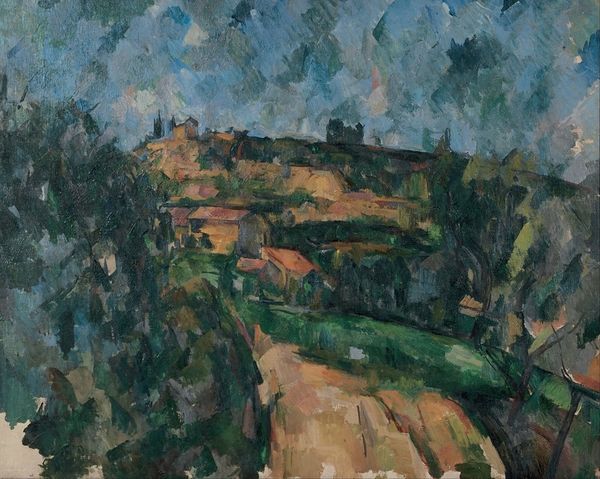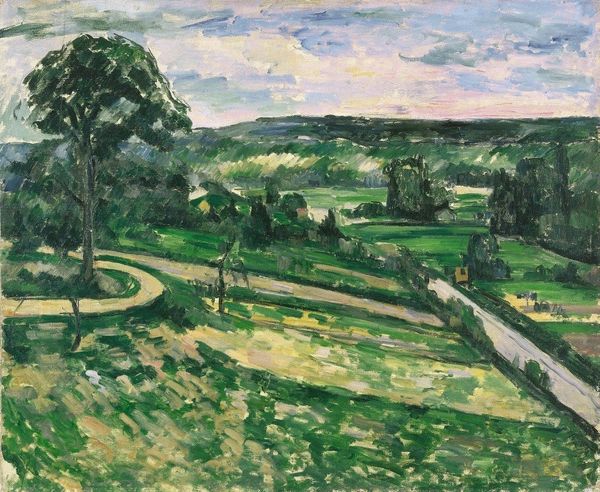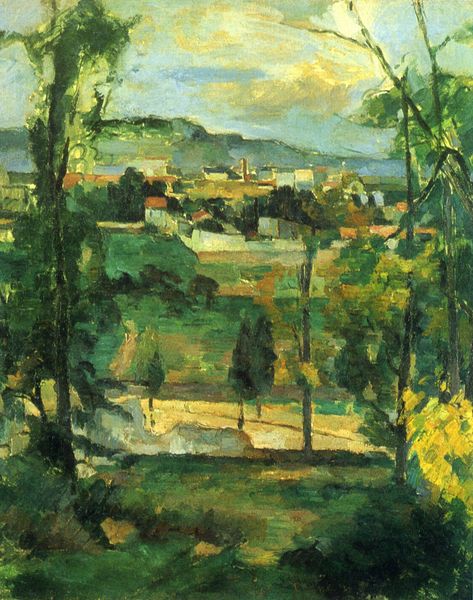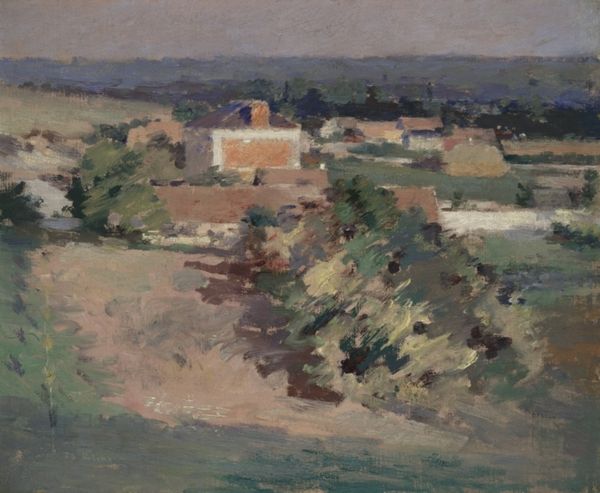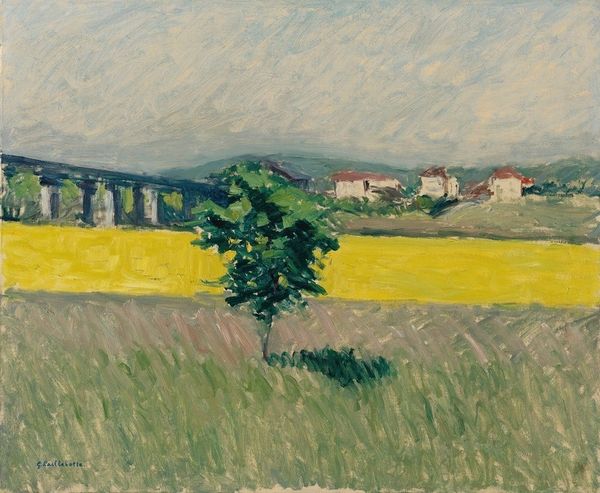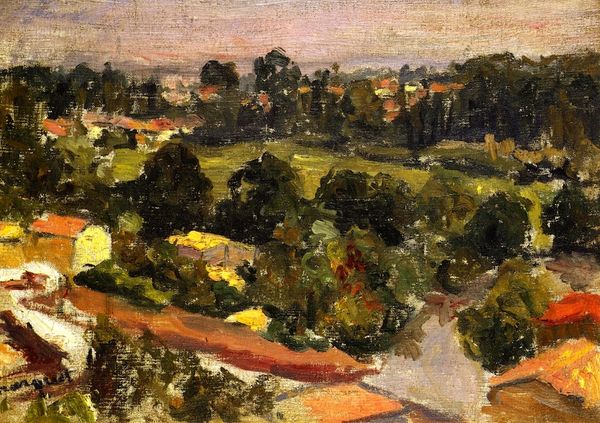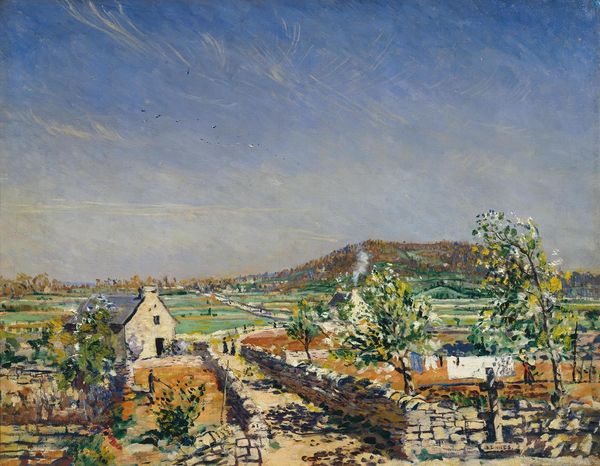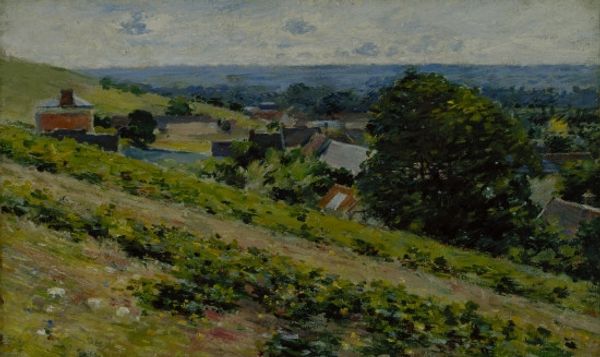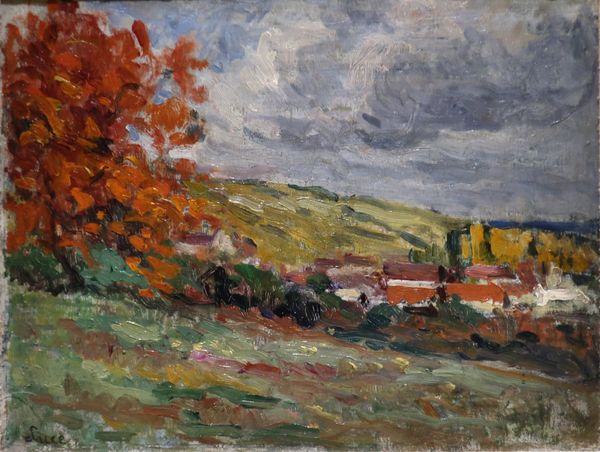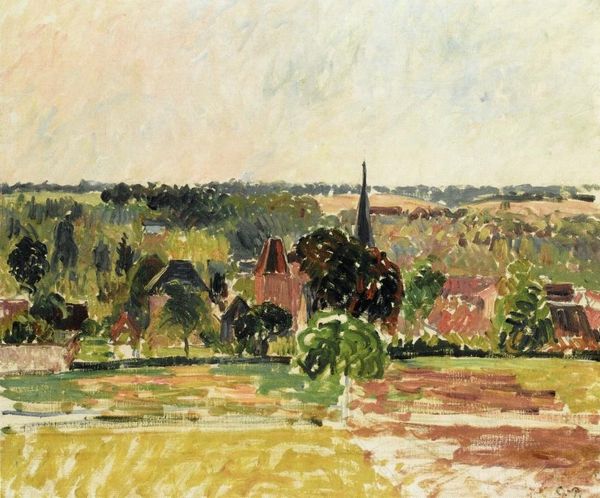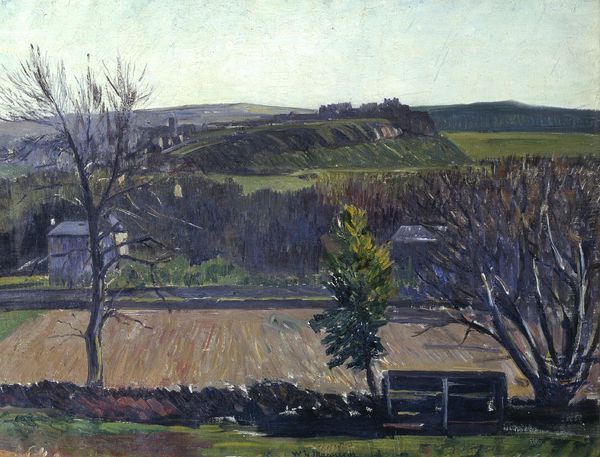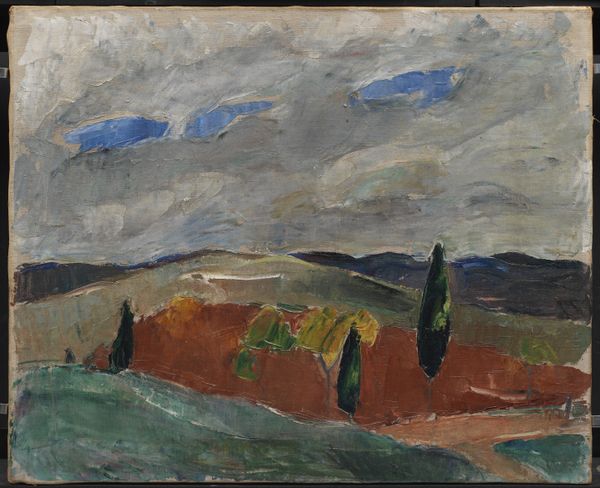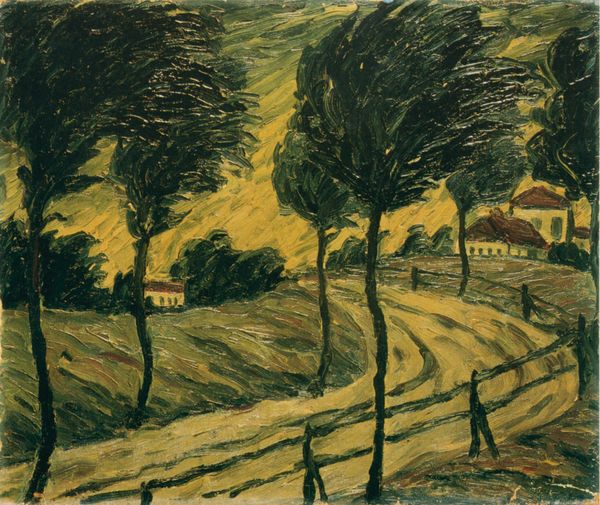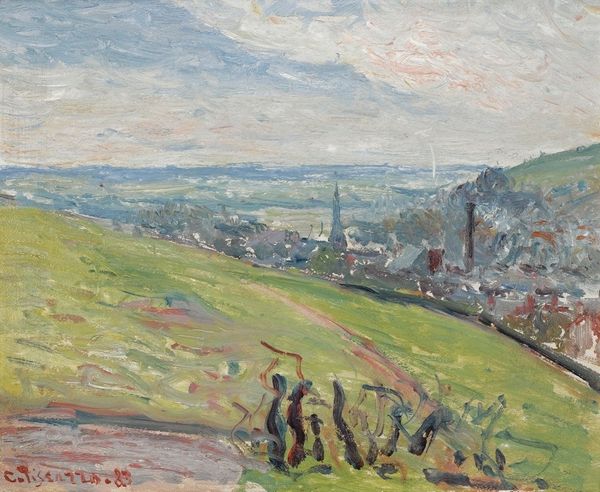
Copyright: Public Domain: Artvee
Editor: This is Paul Cézanne's "Landscape from Jas de Bouffan," an oil painting from around 1879. The patchwork of greens and browns gives me a feeling of tranquility, but the brushstrokes also create a certain tension. What do you see in this piece? Curator: I observe a concentrated effort to represent spatial relationships and the materiality of the landscape. Cézanne's use of color planes, instead of traditional perspective, offers a new way of seeing. Notice how he builds form through these carefully placed blocks of paint. The relationship between the foreground, middle ground, and background is not illusionistic but constructed. How does that structured composition affect your reading of the landscape? Editor: It makes it feel less like a literal depiction and more like an exploration of form and color. So, the subject isn't really the landscape itself, but how we perceive it? Curator: Precisely. Cézanne challenges our expectations of how a landscape should be represented. The individual brushstrokes become crucial. They're not just there to depict foliage; they construct the very essence of what we understand as 'tree' or 'field.' Do you notice any recurring shapes or patterns in his brushwork? Editor: Now that you mention it, there's a definite consistency. Sort of rectangular blocks, especially in the trees and the land. Almost like he's building it from the ground up. Curator: Exactly. This isn’t just observation, but active construction. By deconstructing and rebuilding what we see, Cézanne forces us to reconsider the act of perception itself. Editor: This close examination of the brushstrokes really changed how I saw this landscape. It's far more about the process of seeing than just showing a place. Curator: And hopefully, highlights the fundamental link between perception and construction, which defines Cézanne's influential position within the lineage of modern art.
Comments
No comments
Be the first to comment and join the conversation on the ultimate creative platform.
